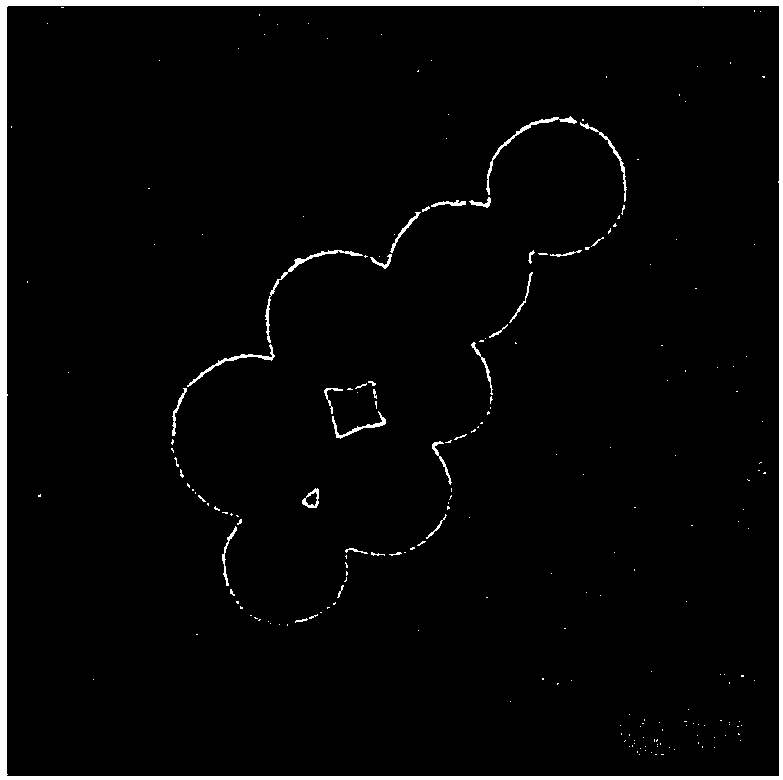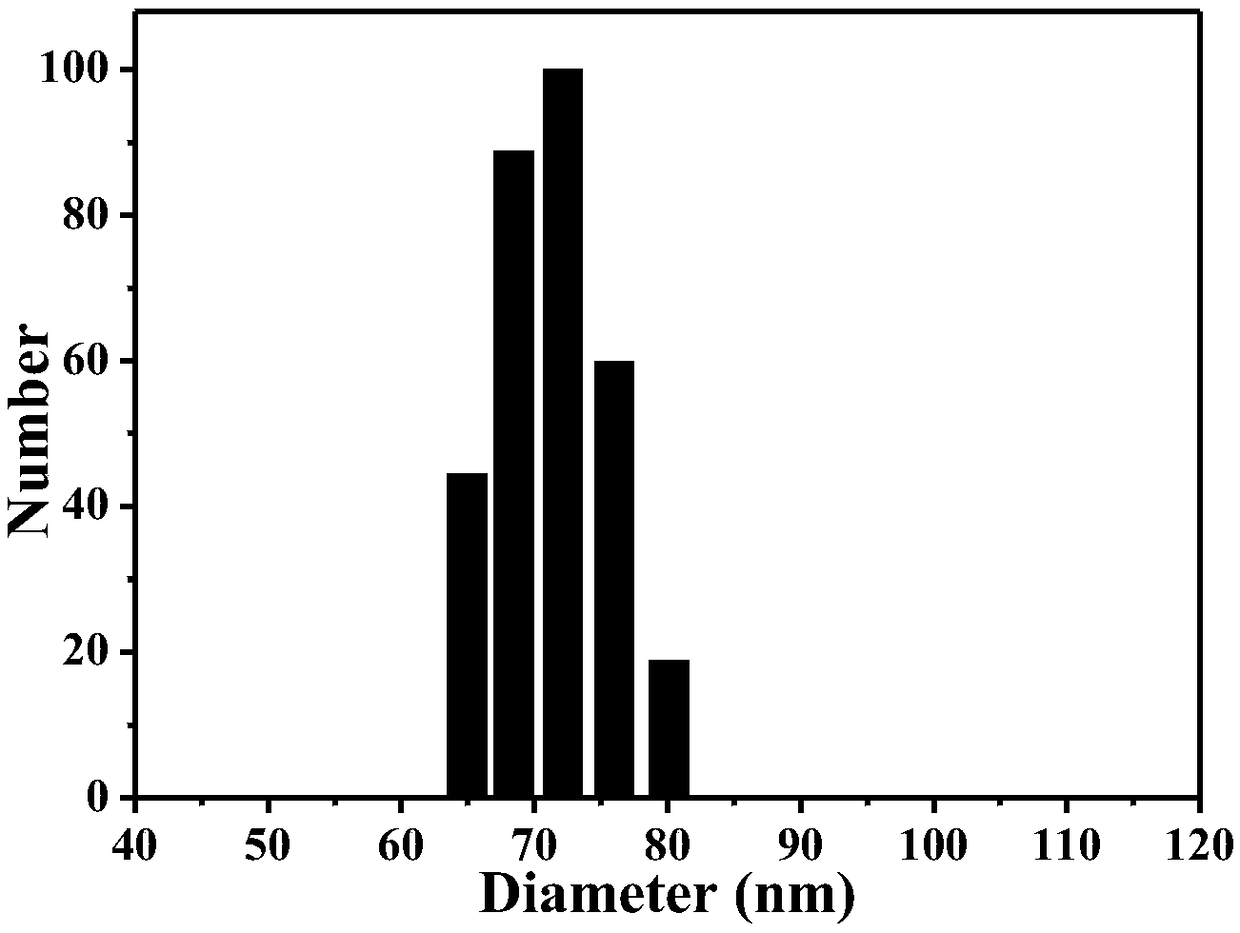Preparation and application of near-infrared-response photodynamic optothermal treatment nano-composite material
A nanocomposite material and photothermal therapy technology are applied in the field of preparation of photodynamic photothermal therapy nanocomposite materials, which can solve the problem of general photothermal conversion efficiency and free radical generation rate, affecting the tumor treatment effect of nanocomposite materials, raw materials and preparation. The problem of complex methods, etc., achieves the effect of high free radical generation rate, low cost and large load.
- Summary
- Abstract
- Description
- Claims
- Application Information
AI Technical Summary
Problems solved by technology
Method used
Image
Examples
Embodiment 1
[0041] The preparation method of the photodynamic photothermal therapy nano-composite material with near-infrared response provided in this example has the following steps.
[0042] (1) Take 0.24g of polyacrylic acid with a concentration of 50% and add it to 4.5mL of ammonia water with a concentration of 25%-28%, stir and mix slowly to obtain the mixed solution I;
[0043] (2) Drop the mixed solution I into 90mL absolute ethanol, stir at room temperature for 30min; slowly add 1.8mL tetraethoxysilane dropwise therein, and stir at room temperature for 10h; then centrifuge and wash with absolute ethanol for 3 times, and then Ultrasonic centrifugal dispersion in pure water, freeze-dried to obtain nano-silica carrier;
[0044] (3) Add 20 mg of nano-silica carrier to 15 mL of ultrapure water for ultrasonic dispersion, and then add 200 μL of CuCl with a concentration of 0.1M 2 2H 2 O solution, stirred at room temperature for 6 hours, and dispersed in ultrapure water by ultrasonic c...
Embodiment 2
[0048] The preparation method of the near-infrared responsive photodynamic photothermal therapy nanocomposite provided in this example is basically the same as in Example 1, except that the myristyl alcohol in step (5) is replaced by lauric acid.
Embodiment 3
[0050] The preparation method of the photodynamic photothermal therapy nano-composite material with near-infrared response provided in this example has the following steps.
[0051] (1) Take 2.8mL of absolute ethanol, 0.05g of diethanolamine, and 2.6mL of cetyltrimethylammonium chloride aqueous solution with a concentration of 25wt%, add it to 16mL of ultrapure water and mix; stir at 60°C for 6h , to get the mixture II;
[0052] (2) Add 1.75mL tetraethoxysilane and 0.15mL 3-mercaptopropyltrimethoxysilane to the mixture II, stir at room temperature for 3h; then add 1.2mL dimethyldiethoxysilane, stir at room temperature for 20h , to obtain the mixed solution III;
[0053] (3) Centrifuge the mixed solution III with absolute ethanol for 3 times, then add 7.5mL of concentrated hydrochloric acid and 60mL of absolute ethanol, stir at 60°C for 24 hours; finally wash with absolute ethanol for 3 times, and centrifuge in ultrapure water Disperse and freeze-dry to obtain nano-silica car...
PUM
 Login to View More
Login to View More Abstract
Description
Claims
Application Information
 Login to View More
Login to View More - R&D
- Intellectual Property
- Life Sciences
- Materials
- Tech Scout
- Unparalleled Data Quality
- Higher Quality Content
- 60% Fewer Hallucinations
Browse by: Latest US Patents, China's latest patents, Technical Efficacy Thesaurus, Application Domain, Technology Topic, Popular Technical Reports.
© 2025 PatSnap. All rights reserved.Legal|Privacy policy|Modern Slavery Act Transparency Statement|Sitemap|About US| Contact US: help@patsnap.com



